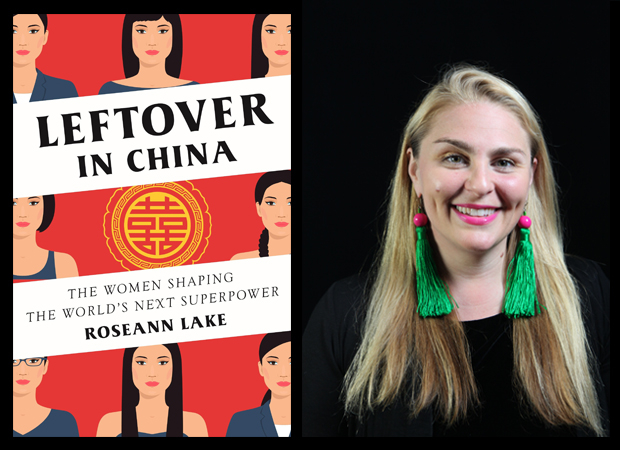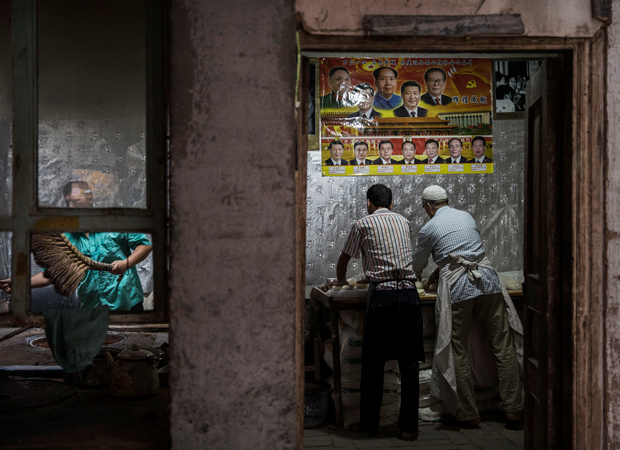Qiu Zhijie Map
on February 7, 2018
Qiu Zhijie: Map of ‘Art and China after 1989: Theater of the World,’ 2017. Ink on paper, mounted to silk, six panels, 240 x 720cm overall.

Qiu Zhijie: Map of ‘Art and China after 1989: Theater of the World,’ 2017. Ink on paper, mounted to silk, six panels, 240 x 720cm overall.

Editor’s note: After we originally posted this video interview about Leftover in China, questions were brought to our attention about the book. We took the video down while we reviewed these concerns, and we determined that the interview is suitable to run on our book video platform.
W. W. Norton & Company: Factory Girls meets The Vagina Monologues in this fascinating narrative on China’s single women—and why they could be the source of its economic future.
Forty years ago, China enacted the one-child policy, only recently relaxed. Among many other unintended consequences, it resulted in both an enormous gender imbalance—with predictions of over 20 million more men than women of marriage age by 2020—and China’s first generations of only-daughters. Given the resources normally reserved for boys, these girls were pushed to study, excel in college, and succeed in careers, as if they were sons.
Now living in an economic powerhouse, enough of these women have decided to postpone marriage, or not marry at all, spawning a label: “leftovers.” Unprecedentedly well-educated and goal-oriented, they struggle to find partners in a society where gender roles have not evolved as vigorously as society itself, and where new professional opportunities have made women less willing to compromise their careers or concede to marriage for the sake of being wed. Further complicating their search for a mate, the vast majority of China’s single men reside in and are tied to the rural areas where they were raised. This makes them geographically, economically, and educationally incompatible with city-dwelling “leftovers,” who also face difficulty in partnering with urban men, given urban men’s general preference for more dutiful, domesticated wives.
Part critique of China’s paternalistic ideals, part playful portrait of the romantic travails of China’s trailblazing women and their well-meaning parents who are anxious to see their daughters snuggled into traditional wedlock, Leftover in China focuses on the lives of four individual women against a backdrop of colorful anecdotes, hundreds of interviews, and rigorous historical and demographic research to show how these “leftovers” are the linchpin to China’s future.
Publishers Weekly (December 11, 2017)
The New York Times, (February 13, 2018)
South China Morning Post, (March 3, 2018)
Inside Higher Ed (February 21, 2018)
Los Angeles Review of Books, (March 7, 2018)
“China’s ‘Leftover’ Women,” Leta Hong Fincher, Ms., November 22, 2011
“All the Shengnu Ladies,” Roseann Lake, Salon, March 11, 2012
“Bachelor Padding: How Lonely Single Men Created China’s Dangerous Real Estate Bubble,” Roseann Lake, Foreign Policy, September 28, 2012
“China’s Leftover Women,” Leta Hong Fincher, The New York Times, October 11, 2012
“From Half the Sky to Leftovers: A Q + A with Leta Hong Fincher,” Mei Fong and Leta Hong Fincher, ChinaFile, April 23, 2014
Leftover Women: The Resurgence of Gender Inequality in China (Video Interview), Leta Hong Fincher, ChinaFile, July 31, 2014
“‘Leftover’ and Proud,” The Economist, August 2, 2014
“Why Is It so Hard for Unmarried Women in China to Go See a Gynecologist?,” Roseann Lake, Jezebel, September 10, 2015
“Rise of the Leftovers,” Roseann Lake, TEDxSuzhouWomen, September 17, 2015
“‘Still Not Married?’ A Graphic Guide to Surviving Chinese New Year,” Roseann Lake, ChinaFile, February 20, 2015
“China’s ‘Leftover Women’: What it’s Really Like Being Unmarried at 30,” Yuan Ren, The Telegraph, April 11, 2016

We’ve just posted the latest information about all the foreign NGO temporary activities and representative office registrations that took place as of January 31, 2018. Of note, registrations of representative offices were down somewhat in January—not since March 2017 have fewer offices been registered in a given month. This could be tied to a number of potential factors: foreign NGO staff on holiday in December and January, fewer foreign NGOs actively working to establish an office as a critical mass have already been registered, or less urgency on the part of registration authorities now that the first year has passed and more than 300 offices were registered.
In 1957, the launch of the Sputnik satellite vaulted the Soviet Union to the lead in the space race and galvanized the United States. U.S. supercomputer researchers are today facing their own Sputnik moment—this time with China.
China’s official People’s Daily newspaper reported in December that Chinese scientists had lowered acoustic sensors into the Mariana Trench, at the bottom of the Pacific Ocean.
The sexually transmitted disease gonorrhea is becoming resistant to the only two antibiotics left to treat it — and it’s spreading in China, according to new research
A start-up incubator on the outskirts of Shanghai is laying out sweeteners for budding entrepreneurs: Free office space, subsidized housing rent, tax breaks and in some cases, cash of up to 200,000 yuan ($31,211.47).
Chinese ride-hailing group Didi Chuxing has signed partnership agreements with 12 car companies to help them market auto-sharing services and electric vehicles.
The authorities in China have detained a wealthy investor who went into business with relatives of the previous prime minister, a sign that the anticorruption campaign initiated five years ago by President Xi Jinping may again be closing in on a former top leader.
By traveling not just to China’s Xinjiang Uighur Autonomous Region, where 10 to 15 million Uighurs live, but also to Syria, where some have fled and taken up arms with militant groups, Associated Press reporter Gerry Shih sought to answer the most politicized and consequential questions about the ethnic group.
